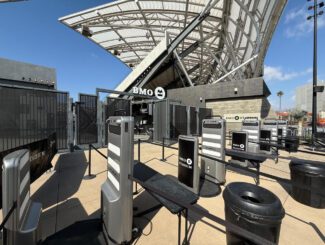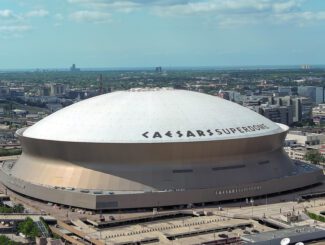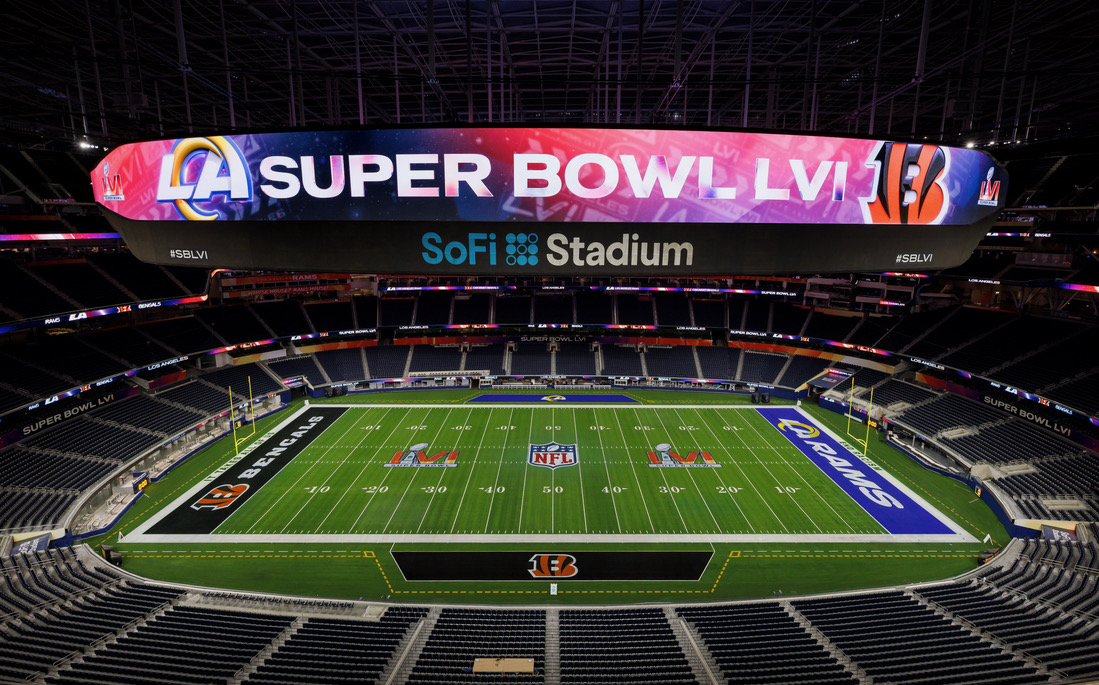
Historically, most large stadiums getting set to host a Super Bowl can spend a year getting their connectivity infrastructure ready for the demands of the upcoming big game. This year, SoFi Stadium, home of Super Bowl LVI on Feb. 13, is charting a different path, with Super Bowl-like Wi-Fi usage numbers occurring almost every Sunday of the current NFL season.
At the start of December, SoFi Stadium saw four nights of concerts, three of which topped previous Super Bowl highs for Wi-Fi usage, with the last show producing 32.1 terabytes of data used, with over 5TB per hour sustained for the six hours surrounding the event.
What is driving the growth in consumption?
To be sure, the NFL’s newest, biggest venue has turned into a must-see location for local fans, visiting fans, and concertgoers. But, unlike many other NFL venues this season, the 70,000-seat SoFi Stadium saw a regular season of full-house crowds, leading to part of the data story.
Beyond obligatory selfies and videos of the amazing Infinity Screen by Samsung there’s something else going on. Not only is SoFi Stadium seeing lots of Wi-Fi consumption, measured in terabytes per hour, it is seeing events with concurrent peak connection rates exceeding 70 percent of ticketed guests. And most events since September recorded peak throughput rates eclipsing those recorded at past Super Bowls.
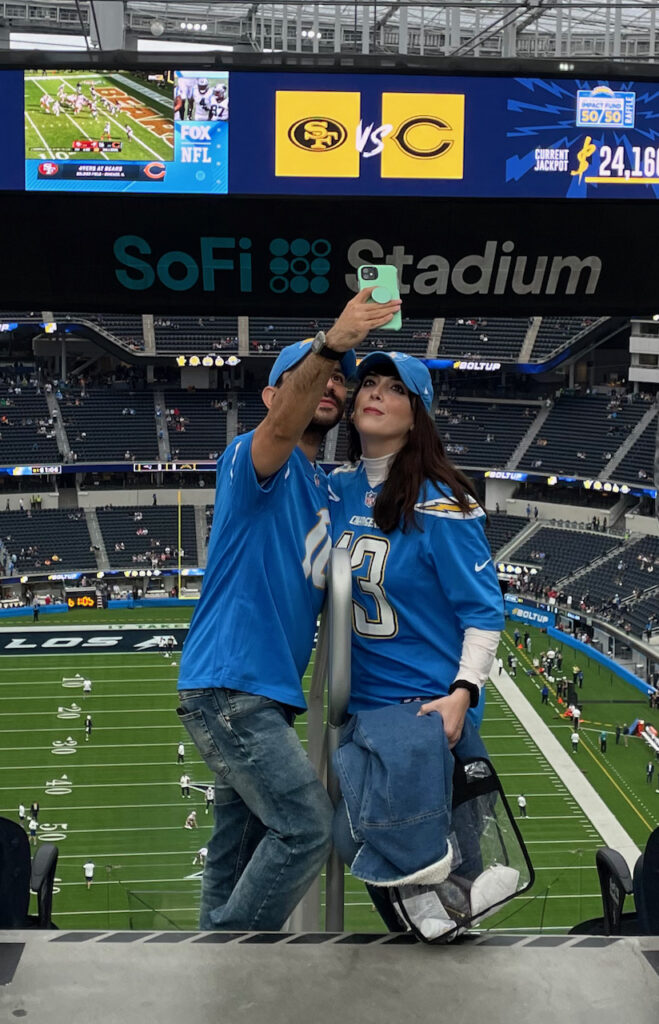
More data may tell a different story, but today, it appears that SoFi Stadium’s all-digital ticketing and touchless/cashless concessions operations have fueled a new fan experience that sees attendees connect early and use wireless more than ever before.
Auto-connect configurations, where cellular providers like Verizon can automatically switch customers to a Wi-Fi connection, are another contributor to the rise in data use. More-powerful phones and more data-hungry mobile applications stay connected for longer periods of time and consume more connectivity.
What does this mean for venues? Simply, that they may have to rethink the “new normal” for connectivity. They need to carefully review and reengineer their wired and wireless infrastructure and in many cases upgrade sooner than previously expected.
SoFi Stadium’s unique networking season
Led by Skarpi Hedinsson, Chief Technology Officer, SoFi Stadium and Hollywood Park, and Master Technology Integrator, AmpThink, the SoFi Stadium Wi-Fi network is the biggest stadium Wi-Fi network AmpThink has built with 2,521 APs. The Cisco-supplied Wi-Fi 6 network uses an under-seat deployment in the main bowl, with traditional overhead antennas in other locations.
For the early part of the season, some of the Wi-Fi data surges seen at SoFi Stadium were thought to be partly the result of the fact that the venue’s cellular distributed antenna system (DAS) did not have full carrier participation, leading more fans to use Wi-Fi. However, as carriers came online over the course of the season, Wi-Fi usage stayed high. A variety of performance metrics improved as AmpThink and the SoFi Stadium and Hollywood Park IT tuned the system in response to feedback from fans and staff.
With the novelty of a new, exciting venue, early season games saw high attendance rates and heavy demand for Wi-Fi with consumption reaching into the 19 TB range. According to statistics provided by Hollywood Park, a late-September game at the stadium saw 24.4 terabytes of consumption over a 6-hour period, a mark that would have been the third-highest ever recorded in our unofficial tally of “biggest Wi-Fi” days at large public venues.
The only venues to report bigger numbers were Ohio State’s Ohio Stadium on Oct. 5, 2019 (25.6 TB) and Hard Rock Stadium on Feb 2, 2020 (26.42 TB at Super Bowl 54[i]). In comparison to SoFi Stadium, Ohio State’s performance came from a sellout crowd of 104,797 fans; and data totals from Super Bowl 54, which had 62,417 in attendance, were collected over a 24-hour period. SoFi Stadium’s late-September marks, by comparison, were collected over a span of just six hours.
More clients connected + More apps in use = More data consumed
A deeper dive into the SoFi Stadium Wi-Fi numbers that day also show something radically different happening on the throughput and connected-clients fronts.
The previous Ohio State and Super Bowl 54 reports were also tops in “take rate” — a count of fans who connected to the network during the event. Over the course of the respective games, 71.5 percent of Ohio State fans and 71 percent of Super Bowl 54 attendees connected to Wi-Fi. One early season game at SoFi Stadium saw peak concurrent connections totaling 54,555 devices — a 78 percent concurrent take rate (67,355 total tickets scanned). In contrast, the peak concurrent total for Super Bowl 54 was 24,837 devices, a 40 percent concurrent take rate. Ohio State’s record day saw 45,200 peak concurrent connections, a 43 percent concurrent take rate.
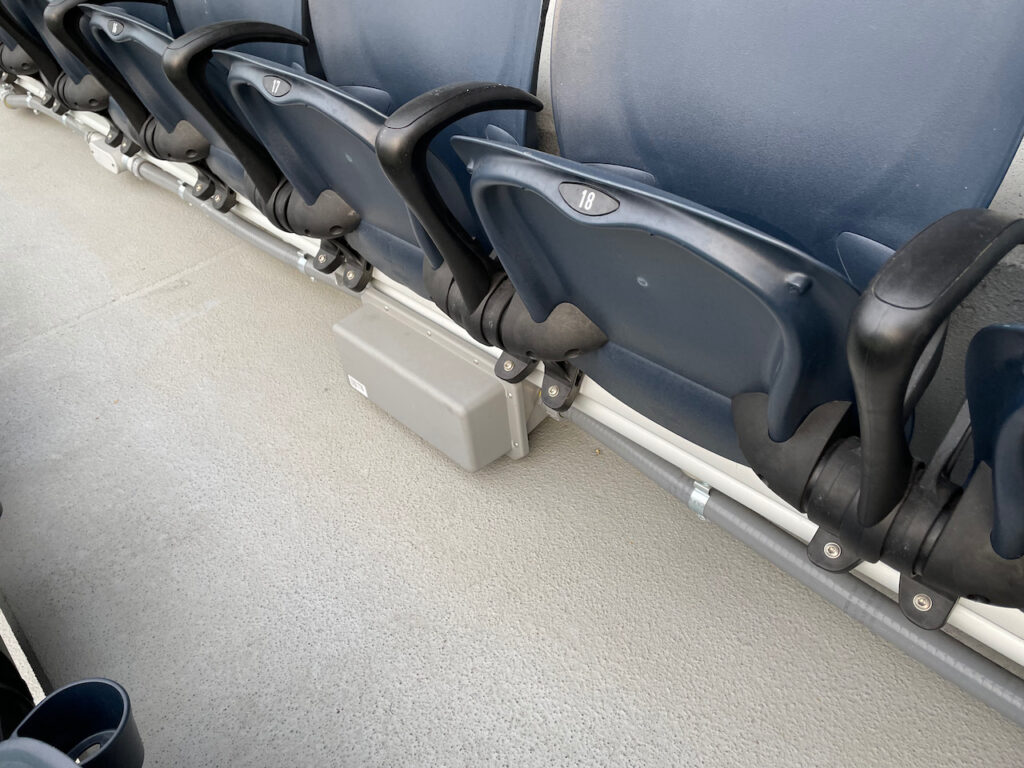
More jaw-dropping numbers from SoFi Stadium’s early season games include a peak download throughput of 9.2 Gbps, a peak upload number of 10.2 Gbps, and a peak combined throughput number of 14.4 Gbps — all new records. All regular-season football games at SoFi Stadium have seen combined peak rates between 12 Gbps and 16 Gbps, with one concert driving 17.5 Gbps. Over the course of the entire season, SoFi Stadium’s peak throughput averaged 13.0 Gbps, and average total data consumption was 19.2 TB.
According to Hedinsson, the overall sports move to post-pandemic all-digital ticketing is clearly part of the increased wireless usage. “With people being forced to be on their phones for entry, you are getting them attached to the venue app and simply driving more connectivity from an earlier demand,” Hedinsson said. “They are on their phones from the moment they get there.”
When you add in SoFi Stadium’s completely cashless and touchless concessions operations, it’s understandable that with full houses every weekend, fans will be driving network traffic every time they go to get food and drink.
Hedinsson also noted that when compared to data collected from other venues’ past performance, fans at SoFi Stadium events are using more apps per device, with apps staying open or connected longer, presenting new challenges to the SoFi Stadium and AmpThink technology teams. Based on STR’s October visit, we can attest to the venue’s architectural uniqueness and eye-catching videoboard presentations; those features provide ample backdrops for selfies, videos, and live streams.
“There are just more apps being used on more devices,” Hedinsson said. “It is all part of a higher expectation for the game-day wireless experience.”
What’s the future going to look like?
Our historical observations of Wi-Fi network totals from big events (especially the Super Bowl) have shown significant year over year growth. If this season is any indication, the growth curve may be getting steeper, a trend stadium network owners and operators should take to heart.
Looking at the recent history of Wi-Fi data totals from Super Bowl games, over the past six non-Covid contests, the compound annual growth rate (CAGR) is approximately 33 percent. If that rate holds, we may see Wi-Fi consumption at the subsequent three Super Bowls in the range of 34 TB, 45 TB and 58 TB.

Most big stadiums don’t see Super Bowl-type numbers during their regular seasons, but the venue industry as a whole does track to trends first seen at Super Bowls. If wireless consumption is increasing sharply overall it may be time for even smaller venues to reconsider their approach to network infrastructure. Upgrades may involve more than increases in access point counts and include major upgrades to wired networks and internet connectivity.
“This is really a story about how fan expectations relating to wireless have changed,” Hedinsson said. “The big question for venue network operators is, what should you be planning for?”
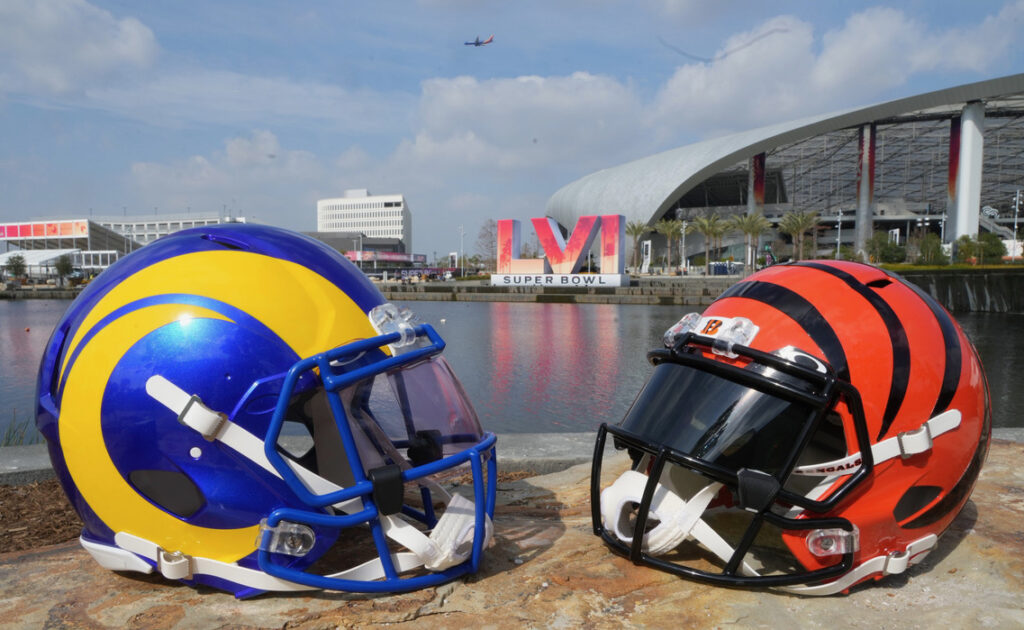
[i] all prior Super Bowl network stats are provided by Extreme Networks
#StadiumWiFi #SuperBowl #SoFi






